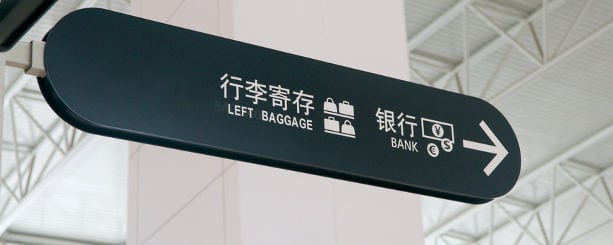
By default, most Chinese manufacturers require a 30% deposit before production. When, something turns out to not go as planned, the deposit, as if by magic, suddenly turns into a non-refundable down payment, never to be seen again. To avoid undertaking such risks, many importers rely Letters of Credit (L/C) to pay their suppliers, which requires no such deposit. Instead, the payment is released only when the goods are shipped.
In this article, we explain how a Letter of Credit can act as an extra layer of security when buying from China – but also why importers cannot blindly rely on an L/C as the ultimate safety mechanism.
How a Letter of Credit Can Protect Your Business
Unlike a regular T/T transaction, an L/C guarantees that a seller, for example a Chinese manufacturer, will receive a payment in full once certain conditions has been met. For importers, an L/C removes the risk of making an upfront deposit payment, before production, while the supplier can be sure that they will indeed receive the money when the batch is completed. Well, that’s at least how it works in theory.
The Letter of Credit is issued by buyers the bank, upon application. The buyers bank is then to notify the sellers bank, in China, that the L/C has been issued, and that the available funds will be unlocked once certain conditions has been fulfilled. It does indeed sound like a solid setup. Yet, importers rely far too much on the usefulness of this mechanism.

FREE CONSULTATION SESSION
- 1. How to create product designs & specifications
- 2. Finding suppliers in China, Vietnam & India
- 3. Shipping & import taxes (US, EU, UK & Australia)
- All attendees can ask questions!
- Best Regards, Ivan Malloci
Why a Letter of Credit is Only What You Make it
Once the L/C has been issued, there’s no turning back. Yet, an L/C that only requires the supplier provide a bill of lading, offers no other guarantee than that, well, ‘something’ has been shipped. That could be just about anything, including defective items, or brickstones. Far too often, the supplier is only required to do exactly that to ‘unlock’ the funds – present a Bill of Lading.
Your bank are neither an industry expert, nor a quality assurance consultant. Once an L/C is issued, the transaction is set to go through, regardless of the result. That said, bankers are, generally, not idiots, and will not take a foreign bank or supplier by its word. However, each L/C term is backed up by a document. When submitted, the corresponding condition is fulfilled.
As such, an L/C is indeed not worth more, or less, than its payment terms. What you must figure out is how to set terms that makes it hard for the manufacturer to walk away from quality issues. Clearly, I don’t have the answer for all industries, but at least I can give you a few suggestions on what you can do to add, a thick, extra layer of security:
1. Require an approved Quality Inspection Report, issued by a specific company, and, if possible, signed by an already assigned inspector. The bank should be supplied with a sample report, including a signature of this person (i.e. the quality inspector). This person could also be the director, or employee, of your company. As you might have already figured out, this makes it a whole lot harder for the supplier to ship defective items.
2. Require a passed Compliance Test and/or Product Certificate, issued by a specific company (e.g. SGS or Bureau Veritas), and, once again, signed by a certain individual. This term allows you to both avoid delivery of non-compliant items, and put pressure on the supplier to produce a ‘self issued’ Declaration of Conformity, which is often required when importing certain items.
Such terms shifts the balance of power to your advantage. While you expect the supplier to show fierce resistance at first, it’s needed to avoid situations where the supplier is virtually under no pressure, other than keeping a certain deadline. That being said, the supplier should still provide all necessary freight documents, including the following:
- Bill of Lading
- Packing List
- Commercial Invoice
- Country of Origin Certificate / Form A
Why a Letter of Credit is not always accepted by Chinese manufacturers, or their banks
Importers has paid overseas suppliers, including those in China, for decades. It’s certainly not a new payment method. Yet, far from all Chinese manufacturers are willing, or even able, to accept one. It basically comes down to two factors: the order volume, and the manufacturers size. Let’s begin with the latter.
Many small manufacturers in China function as survival businesses, rather than companies investing in long term growth. Whenever there’s a profit, the owners are paid a dividend. As such, these companies run on little capital, and did, at least until a few years ago, rely on credit to fund material and component purchases from subcontractors – the majority of which is made when a new order is placed by a buyer.
However, as local manufacturers find it harder to obtain the necessary credit from their banks (remember, an L/C involves no upfront payment), some are simply forced to reject. It may also come down to experience, as some small factories have never dealt with L/Cs before, and consider it too much of a hassle. So, if you insist on a Letter of Credit, you better source a medium sized, or large, manufacturer. However, they also have their own requirements.
While L/Cs are generally accepted even for small orders, few manufacturers accept an L/C for orders valued less than $30,000, sometimes up to $70,000.
Communicate your intentions early
As Renaud Anjoran explains in this article, it’s crucial to communicate in the very beginning of the research process that your company policy (such terms tend to reason well with Asian suppliers) is to only pay by Letter of Credit. As the article also mentions, make the sales agent make some sort of written confirmation before you move on further with the process.






















Good explanation!
Just one remark: I have never seen an L/C call for a specific individual’s signature for QC inspection / testing reports. It might make sense, but I think it is not a must.
Good evening Renaud!
Yes, it was actually the idea of a client, a few years back, buying textiles from India. The CEO demanded that he had to sign the QC report by himself before the L/C payment went through. I saw their company logo on a few store fronts last year. Seemingly it’s a strategy that has worked out well for them! That said, it was quite tricky to make the supplier agree.